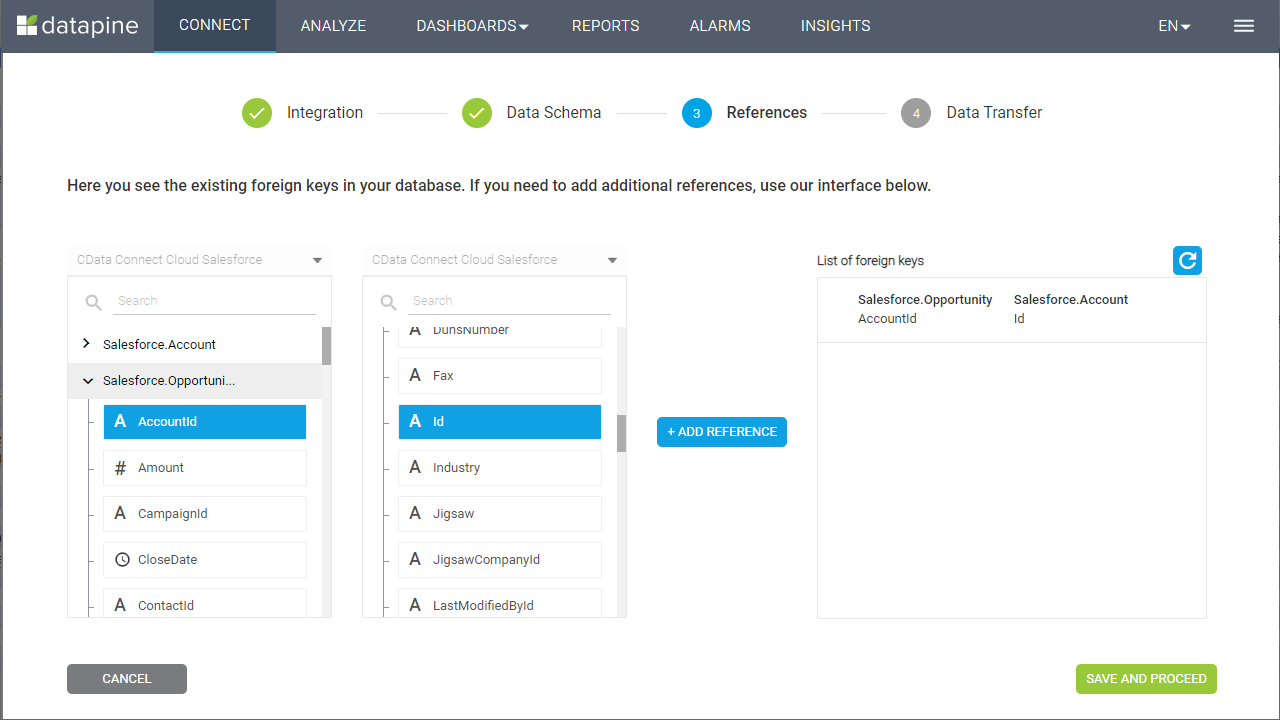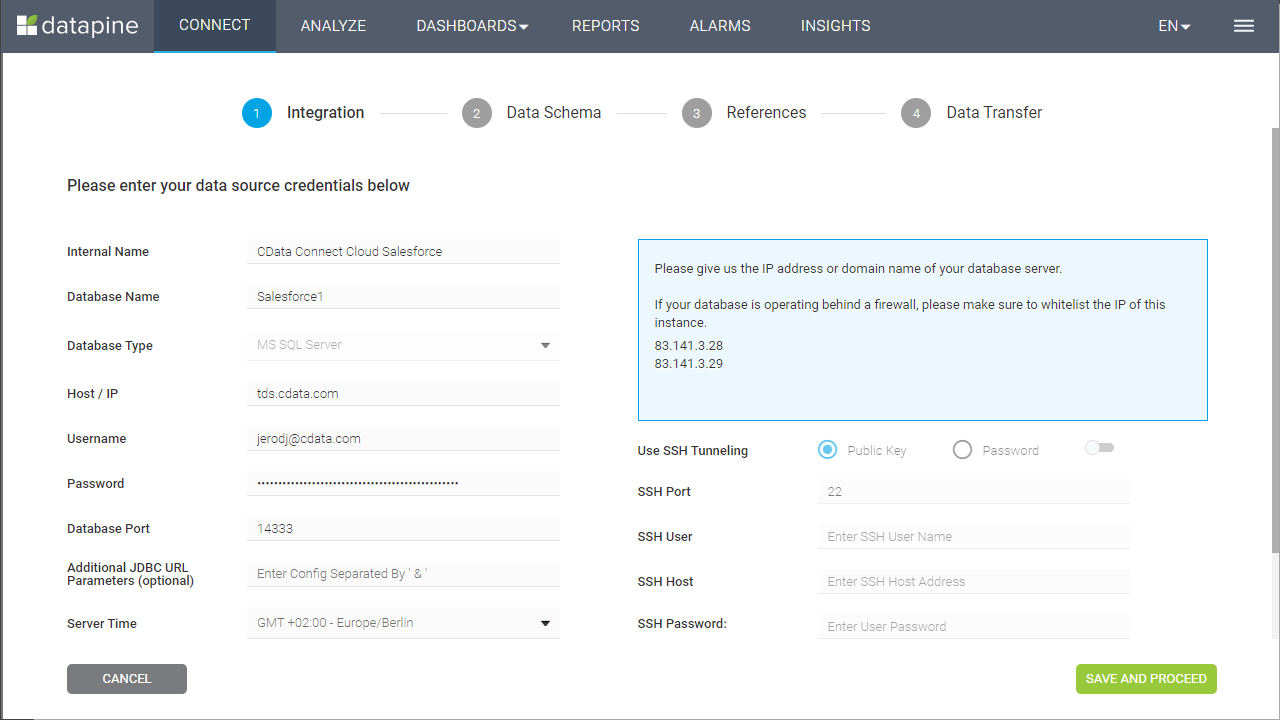Model Context Protocol (MCP) finally gives AI models a way to access the business data needed to make them really useful at work. CData MCP Servers have the depth and performance to make sure AI has access to all of the answers.
Try them now for free →Build Jira-Connected Visualizations in datapine
Use CData Connect Cloud and datapine to build visualizations and dashboards with access to live Jira data.
datapine is a browser-based business intelligence platform. When paired with the CData Connect Cloud, you get access to your Jira data directly from your datapine visualizations and dashboards. This article describes connecting to Jira in CData Connect Cloud and building a simple Jira-connected visualization in datapine.
CData Connect Cloud provides a pure SQL Server interface for Jira, allowing you to query data from Jira without replicating the data to a natively supported database. Using optimized data processing out of the box, CData Connect Cloud pushes all supported SQL operations (filters, JOINs, etc.) directly to Jira, leveraging server-side processing to return the requested Jira data quickly.
About Jira Data Integration
CData simplifies access and integration of live Jira data. Our customers leverage CData connectivity to:
- Gain bi-directional access to their Jira objects like issues, projects, and workflows.
- Use SQL stored procedures to perform functional actions like changing issues status, creating custom fields, download or uploading an attachment, modifying or retrieving time tracking settings, and more.
- Authenticate securely using a variety of methods, including username and password, OAuth, personal access token, API token, Crowd or OKTA SSO, LDAP, and more.
Most users leverage CData solutions to integrate Jira data with their database or data warehouse, whether that's using CData Sync directly or relying on CData's compatibility with platforms like SSIS or Azure Data Factory. Others are looking to get analytics and reporting on live Jira data from preferred analytics tools like Tableau and Power BI.
Learn more about how customers are seamlessly connecting to their Jira data to solve business problems from our blog: Drivers in Focus: Collaboration Tools.
Getting Started
Configure Jira Connectivity for datapine
Connectivity to Jira from datapine is made possible through CData Connect Cloud. To work with Jira data from datapine, we start by creating and configuring a Jira connection.
- Log into Connect Cloud, click Connections and click Add Connection
- Select "Jira" from the Add Connection panel
-
Enter the necessary authentication properties to connect to Jira.
To connect to JIRA, provide the User and Password. Additionally, provide the Url; for example, https://yoursitename.atlassian.net.
![Configuring a connection (Salesforce is shown)]()
- Click Create & Test
-
Navigate to the Permissions tab in the Add Jira Connection page and update the User-based permissions.
![Updating permissions]()


Add a Personal Access Token
If you are connecting from a service, application, platform, or framework that does not support OAuth authentication, you can create a Personal Access Token (PAT) to use for authentication. Best practices would dictate that you create a separate PAT for each service, to maintain granularity of access.
- Click on your username at the top right of the Connect Cloud app and click User Profile.
- On the User Profile page, scroll down to the Personal Access Tokens section and click Create PAT.
- Give your PAT a name and click Create.
- The personal access token is only visible at creation, so be sure to copy it and store it securely for future use.

Connecting to Jira from datapine
Once you configure your connection to Jira in Connect Cloud, you are ready to connect to Jira from datapine.
- Log into datapine
- Click Connect to navigate to the "Connect" page
- Select MS SQL Server as the data source
- In the Integration step, fill in the connection properties and click "Save and Proceed"
- Set the Internal Name
- Set Database Name to the name of the connection we just configured (e.g. JIRA1)
- Set Host / IP to "tds.cdata.com"
- Set Username to your Connect Cloud username (e.g. user@mydomain.com)
- Set Password to the corresponding PAT
- Set Database Port to "14333"
![Configuring the connection to CData Connect Cloud]()
- In the Data Schema step, select the tables and fields to visualize and click "Save and Proceed"
![Selecting tables and fields to visualize (Salesforce is shown)]()
- In the References step, define any relationships between your selected tables and click "Save and Proceed"
![Defining foreign key relationships]()
- In the Data Transfer step, click "Go to Analyzer"
Visualize Jira Data in datapine
After connecting to CData Connect Cloud, you are ready to visualize your Jira data in datapine. Simply select the dimensions and measures you wish to visualize!

Having connect to Jira from datapine, you are now able to visualize and analyze real-time Jira data no matter where you are. To get live data access to 100+ SaaS, Big Data, and NoSQL sources directly from datapine, try CData Connect Cloud today!





